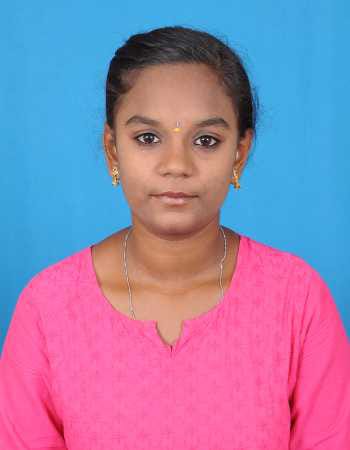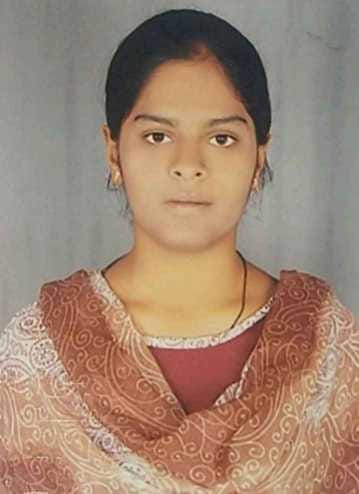Abstract
Nephrotic syndrome (NS) is a glomerular condition that causes excessive proteinuria, hypoalbuminemia, hyperlipidemia, and peripheral edema. The case of 8 year old male child weighing 24 kg with a one week history of edema, the swelling around the eyes and legs. Examination indicated bilateral pedal edema (pitting kind). Laboratory results revealed protein in urine, low serum albumin, and increased lipid levels. However, clinical and laboratory evidence led to the diagnosis of idiopathic nephrotic syndrome (NS). The patient was mostly treated with Cefotaxime, Prednisolone, and Pantoprazole. Urine I/O charting helps assess intake and output.
Keywords
Nephrotic syndrome, Focal segmental glomerulosclerosis, Minimal-change nephrotic syndrome, Idiopathic nephrotic syndrome.
Introduction
Childhood nephrotic syndromes are most commonly caused by idiopathic diseases are focal segmental glomerulosclerosis (FSGS) and minimal-change nephrotic syndrome (MCNS). Children rarely develop third condition i.e., membranous nephropathy2, Idiopathic nephrotic syndrome (INS), another name for primary nephrotic syndrome (PNS), is associated to kidney-specific glomerular disorders that have no systemic etiology. Nephrotic syndrome (NS) is a glomerular disorder typically characterized by gross proteinuria, hypoalbuminemia, hyperlipidemia, and peripheral edema3. Urinary protein levels in nephrotic syndrome typically surpass 3.5 g per 1.73 m2 of body surface area per day5. The incidence of idiopathic nephrotic syndrome (INS) is 1.15–16.9 per 100?000 children, with regional and ethnic differences3. Nephrotic proteinuria is most frequently caused by diabetic nephropathy. Several primary glomerular diseases like Minimal-change glomerulopathy, Focal segmental glomerulosclerosis, Membranous glomerulonephritis, Membranoproliferative glomerulonephritis, account for the great majority of cases of the nephrotic syndrome in persons who do not have diabetes5. Proteinuria results in fall in serum albumin level, and if the liver fails fully to compensate for urinary protein losses by increased albumin synthesis, plasma albumin concentrations decline, leading to oedema formation6. Disease-associated complications include infections, thromboembolism, cardiovascular disease, hypovolemic crisis, anemia, and acute renal failure8. Nephrotic Syndrome is diagnosed by urinalysis, serum electrolytes, serum urea nitrogen, creatinine, and glucose; cholesterol level; serum albumin level, purified protein derivative level; and kidney biopsy12. Oral corticosteroids form the cornerstone for management of most children with nephrotic syndrome. The commonly used preparations are prednisone or prednisolone. Reduction of proteinuria is also possible, in children, using angiotensin converting enzyme inhibitors and/or angiotensin receptor blockers7.
Case Study:
A 8 years male child, born to a non congangluhous married couple, with normal development, presented with chief complaints of swelling in face and extremities, since 1 week. The baby had previously 2 episodes of similar complaints at the age of 4th year and 6th year, with generalized swelling of face and body which resolved on medication, Tab Prednisolone 10mg 1-1-1, on examination child had stable vitals with borderline Hypertension (as per age-height BP centiles). Systemic examination was within normal limits. Investigations revealed slight leukocytosis with neutrophil predominance with normal C-reactive protein, Urine analysis: Appearance-Slightly turbid, Blood-Present; normal renal function tests and normal serum electrolytes C3 + C4 level came to normal. Input output monitoring has normal. Serum Cholesterol was elevated and daily urine analysis showed resolution of proteinuria with three consecutive days of negative protein in urine following which the patient was diagnosed as steroid responsive Nephrotic syndrome and then switched over to alternate day regimen of Prednisolone and discharged with following advice.
On physical examination
RBC Count – 5.8 million/mm3(increased), TC-17340 cells/mm3(increased), Neutrophils- 84%(increased), Lymphocytes- 12%(decreased), MCV-71.9fl (decreased), MCH – 23.2pg, Platelet count- 6.01 lakh/mm3 (increased), Cholesterol 302.0 mg/dl(increased).
Clinical course and outcome
After establishing diagnosis, optimal supportive treatment including Tab Omnacortil p/o 10mg 1-1-1 is used to treat inflammation in the body, Inj Taxim (Cefotaxime) IV 1 g given thrice daily is used to treat bacterial infections, Inj Pantoprazole 20mg IV given at morning before food is used to treat gastric irritation. Low salt intake, high caloric and protein diet were given. The urine output and blood pressure was monitored.
DISCUSSION
The 8-year-old male child with a history of steroid-responsive nephrotic syndrome (SRNS) presented with complaints of swelling in the face and extremities, which had occurred previously at the ages of 4th and 6th year. The child had generalized swelling that resolved with prednisone treatment (Tab Prednisolone). Upon examination, the child had stable vital signs with borderline hypertension, and systemic examination was normal. Investigations showed slight leukocytosis with neutrophil predominance and normal C-reactive protein levels. Urinalysis revealed slight turbidity with blood present, but renal function and electrolytes were normal. C3 and C4 levels were within normal limits. Serum cholesterol was elevated (302 mg/dl), and proteinuria resolved with three consecutive days of negative urine tests. Based on these findings, the child was diagnosed with steroid-responsive nephrotic syndrome (SRNS). The child was started on an alternate-day regimen of prednisolone (Tab Omnacortil) 10mg, and the child was discharged with recommendations for low salt intake, high-caloric and high-protein diet, and monitoring of urine output and blood pressure. Key findings from the examination and lab results included increased RBC count (5.8 million/mm3), total white blood cell count (17,340 cells/mm3), neutrophils (84%), low MCV (71.9 fl), and low MCH (23.2 pg). The platelet count was elevated (6.01 lakh/mm3), and serum cholesterol was raised (302 mg/dl). The treatment plan included supportive care with antibiotics (Inj Taxim for bacterial infection), anti-ulcer therapy (Inj Pantoprazole), and a focus on dietary management. Close monitoring of urine output and blood pressure was also emphasized.
In summary, the child with steroid-responsive nephrotic syndrome was treated with corticosteroids and supportive therapies, and appropriate follow-up care was provided.
CONCLUSION
The 8-year-old male child with a history of steroid-responsive nephrotic syndrome (SRNS) presented with recurrent episodes of generalized swelling, a condition previously managed with prednisone. Based on clinical findings and lab investigations, the child was diagnosed with a current episode of SRNS. Key lab results included elevated cholesterol levels, leukocytosis, neutrophil predominance, and mild proteinuria that resolved with negative urine tests over three consecutive days. The child was started on an alternate-day regimen of prednisolone (Omnacortil) 10 mg, alongside supportive therapies including antibiotics (Inj Taxim) to address potential bacterial infections and anti-ulcer treatment (Inj Pantoprazole). Dietary recommendations focused on low-salt intake and high-calorie, high-protein foods to support recovery. The child’s treatment plan involved close monitoring of urine output, blood pressure, and continued follow-up care. The outcome suggests a positive response to steroid therapy, with resolution of proteinuria and improvement in clinical symptoms. Regular follow-up and adherence to dietary and medication guidelines will be crucial to managing future episodes of SRNS and ensuring the child’s health and development
REFERENCES
- Bonilla-Felix M, Parra C, Dajani T, Ferris M, Swinford RD, Portman RJ, Verani R. Changing patterns in the histopathology of idiopathic nephrotic syndrome in children. Kidney Int. 1999 May;55(5):1885-90. doi: 10.1046/j.1523-1755.1999.00408.x. PMID: 10231451.
- https://doi.org/10.1016/S0140-6736(03)14184-0.
- Prince S, Naresh K, Tulasi R. Case Report on Paediatric Nephrotic Syndrome. EJIFCC. 2020 Jun 2;31(2):164-168. PMID: 32549884; PMCID: PMC7294819.
- Politano SA, Colbert GB, Hamiduzzaman N. Nephrotic Syndrome. Prim Care. 2020 Dec;47(4):597-613. doi: 10.1016/j.pop.2020.08.002. Epub 2020 Sep 26. PMID: 33121631.
- Orth SR, Ritz E. The nephrotic syndrome. N Engl J Med. 1998 Apr 23;338(17):1202-11. doi: 10.1056/NEJM199804233381707. PMID: 9554862.
- Hull RP, Goldsmith DJ. Nephrotic syndrome in adults. BMJ. 2008 May 24;336(7654):1185-9. doi: 10.1136/bmj.39576.709711.80. PMID: 18497417; PMCID: PMC2394708.
- Bagga A, Mantan M. Nephrotic syndrome in children. Indian J Med Res. 2005 Jul;122(1):13-28. PMID: 16106086.
- Park SJ, Shin JI. Complications of nephrotic syndrome. Korean J Pediatr. 2011 Aug;54(8):322-8. doi: 10.3345/kjp.2011.54.8.322. Epub 2011 Aug 31. Erratum in: Korean J Pediatr. 2012 Apr;55(4):151. PMID: 22087198; PMCID: PMC3212701.
- Kodner C. Diagnosis and Management of Nephrotic Syndrome in Adults. Am Fam Physician. 2016 Mar 15;93(6):479-85. PMID: 26977832.
- Alaniz C, Brosius FC 3rd, Palmieri J. Pharmacologic management of adult idiopathic nephrotic syndrome. Clin Pharm. 1993 Jun;12(6):429-39. PMID: 8403814.
- Cameron JS. The nephrotic syndrome and its complications. Am J Kidney Dis. 1987 Sep;10(3):157-71. doi: 10.1016/s0272-6386(87)80170-1. PMID: 3307394.
- Gipson DS, Massengill SF, Yao L, Nagaraj S, Smoyer WE, Mahan JD, Wigfall D, Miles P, Powell L, Lin JJ, Trachtman H, Greenbaum LA. Management of childhood onset nephrotic syndrome. Pediatrics. 2009 Aug;124(2):747-57. doi: 10.1542/peds.2008-1559. Epub 2009 Jul 27. PMID: 19651590.


 Amruthavarshini R.*
Amruthavarshini R.*
 Sandeep Jadhav
Sandeep Jadhav
 Aswan Kumar Reddy K. V.
Aswan Kumar Reddy K. V.
 S. Jabeen Taj
S. Jabeen Taj
 Harshith Pisale
Harshith Pisale
 10.5281/zenodo.14780078
10.5281/zenodo.14780078